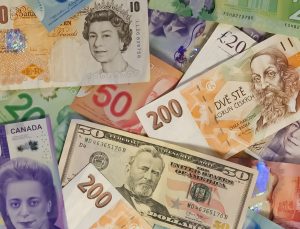Forex trading is all about buying and selling currencies to make a profit. It is a highly volatile market where prices can change rapidly, making it important to understand how much the price of a currency pair can move in a single day. This is where pips come in.
Pips, or “percentage in point,” are the smallest unit of measurement used in forex trading. They represent the smallest possible price change that a currency pair can make. In most pairs, a pip is equal to 0.0001 of the quoted price. For example, if the EUR/USD pair is trading at 1.1200, a one-pip movement would be from 1.1200 to 1.1201.
The average pip movement in forex varies from day-to-day and depends on a number of factors, such as market volatility, trading volume, and economic news releases. On average, most currency pairs move between 50 and 100 pips per day. However, some pairs can move much more than this, and some may move less.
The most volatile currency pairs tend to be those that involve emerging market currencies, such as the South African rand, Mexican peso, or Brazilian real. These currencies are more vulnerable to political and economic events, which can cause sudden and significant price movements. For example, during the 2018 Turkish lira crisis, the USD/TRY pair moved more than 1,000 pips in a single day.
On the other hand, major currency pairs, such as the EUR/USD, GBP/USD, and USD/JPY, tend to be less volatile. These pairs are heavily traded and have a more stable economic and political environment, making them less susceptible to sudden price movements. As a result, their average daily pip movement may be closer to 50 pips.
It’s important to note that the average pip movement can also depend on the time frame being analyzed. For example, the average daily pip movement may be different from the average hourly or weekly pip movement. Day traders who focus on short-term price movements may need to pay closer attention to these shorter time frames.
Another factor that can affect the average pip movement is the time of day. Forex trading is a 24-hour market, and different trading sessions can have different levels of volatility. For example, the Asian trading session tends to be less volatile than the European or North American sessions. Traders who want to take advantage of high volatility may need to adjust their trading schedule accordingly.
In conclusion, the average pip movement in forex varies depending on a number of factors, such as the currency pair, market volatility, trading volume, and economic news releases. Most currency pairs tend to move between 50 and 100 pips per day, but some pairs can move much more than this. Understanding the average pip movement can help traders make more informed decisions about their trading strategies and risk management.





